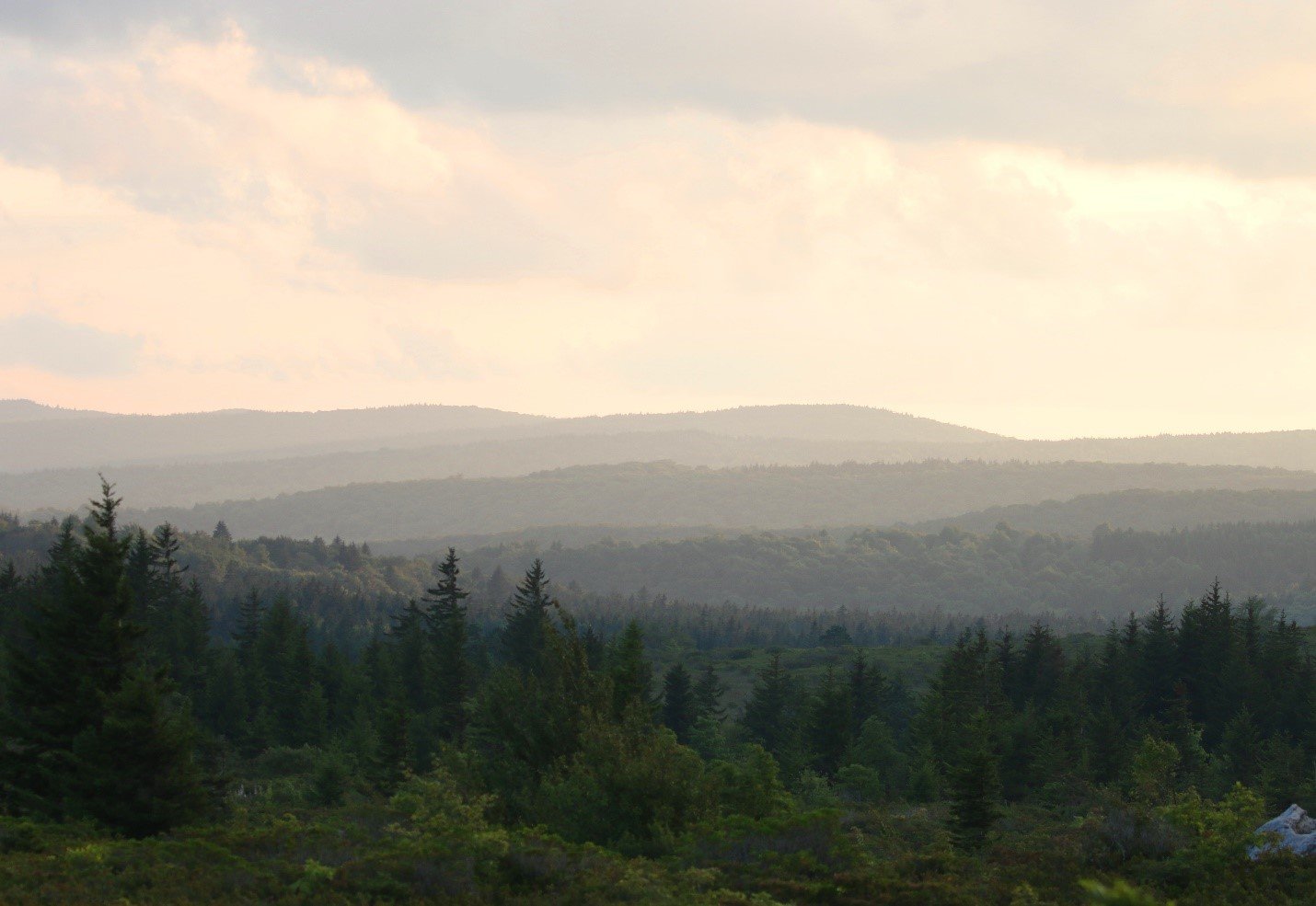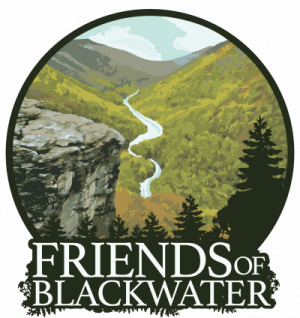
Pinopsida
(Class)
Conifers
Red Spruce
Picea rubens
Whether it be lining the foggy ridgelines or lining the edges of northern bog, Red Spruce is the staple of the West Virginia Highlands and the Blackwater Canyon. This species is one you have likely seen while exploring the area and adds to the reminisce feeling that you are farther north than your true positioning. Often the windward (west-facing) side of the trees along the ridgelines and mountaintops are stunted due to the prevailing winds at these elevations that they are exposed to. The spruce was once a much more dominant species in our forest until extensive logging at the turn of the 20th century resulted it being outcompeted in several areas due to the succession of more rapidly regenerating species. It is estimated that in the central Appalachians only 10% of the original Red Spruce forest is still standing. Many of the species that are unique to the area we work so hard to protect rely on Red Spruce. Red Spruce can be separated from introduced Norway Spruce from its silhouette looking neat with a narrow crown and horizontal branches compared to the Norway Spruce which its messy silhouette is aimed by branches that appear to droop towards the end. Cones are also a good way to separate the two as Red Spruce has smaller cones reminiscent of what most people visualize as a “regular” pinecone compared to the long narrow cones of the Norway Spruce. While Norway Spruce is popular as an ornamental for lifetimes as settlers planted this species originally as a reminder of where they called home, we encourage the planting of our native Red Spruce.
Tsuga canadensis
A denizen found from the cool, moist hollows on the lower reaches of the watershed to the mountaintops where it dominates along side the Red Spruce, Eastern Hemlock is a conifer that towers into the canopy with thin needles that have a whitish underside that can help to create dark, moist conditions below. The seedlings and saplings can grow in the dark conditions created by the mature hemlocks above as they are one of the most shade tolerant species in our area. The cones are produced when the tree reaches 20 to 40 years of age and are relatively small oval-shaped cones. This species can grow to large sizes and can have a trunk that can grow to be over 3 feet in diameter and over 100 feet tall. However, in our region the Eastern Hemlock is under siege from the Hemlock Wooly Adelgid. This invasive aphid-like insect can be easily identified by the white woolly masses they form on the underside of branches at the base of the needles. Fortunately, many trees are being treated for this invasive.
Eastern Hemlock
Abies balsamea
Balsam fir can be distinguished from red spruce by its needles and bark. The needles of balsam fir are flat and rounded at the tip while red spruce needles are round and come to a sharp point. Balsam fir bark is full of sap “blisters” that pop when under pressure while red spruce lacks them. Balsam fir is nicknamed “blister pine” in the Alleghenies due to this odd characteristic.






